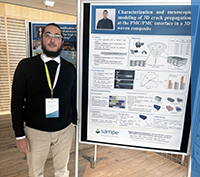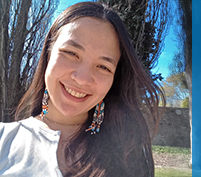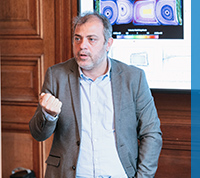PhD Defence of Brayan Murgas Portilla
Brayan Murgas Portilla defends his PhD in Computational Mechanics and Materials on April 7th, 22
20 March 2022
Towards a precise description of the grain boundary mobility and energy for their numerical integration in finite element modeling of recrystallization and grain growth mechanisms.

Brayan Murgas Portilla conducted his PhD work in the MSR team, under the supervision of Nathalie Bozzolo and Marc Bernacki. Brayan defends his PhD in Computational Mechanics and Materials on April 7th, 2022 in front of the following jury:
– Prof. Laurent Delannay, Université catholique de Louvain, Belgium
– Prof. Lukasz Madej, AGH University, Poland
– Prof. Roland Logé, EPFL, Switzerland
– Prof. Somnath Ghosh, Johns Hopkins University, USA
– Prof. Carl Krill, Ulm University, Germany
– Dr. Baptiste Flipon, MINES ParisTech, France
– Dr. Pascal de Micheli, TRANSVALOR, France,
Abstract:
The relation among process, microstructure, properties, and performance of materials is of great interest to the metal forming industries. The microstructure-properties relationship has opened an exciting branch of materials science called Grain Boundary Engineering: control the grain boundary character distribution to promote specific materials properties. The manufacturing process of metals can be modeled at the mesoscopic scale using numerical tools that describe the evolution of grain boundaries. The Level-Set (LS) approach in the context of Finite Element (FE) formulations remains a powerful tool that allows mimicking industrial thermomechanical treatments where large deformation can take place.
This work aims to improve the FE-LS framework by including enriched grain boundary energy and mobility models and applies the enriched framework to the simulation of grain growth and recrystallization in a single phase austenitic steel. Accounting for the heterogeneity or the anisotropy of GB properties is necessary if special boundaries or subgrains have to be considered. The improvement of the GB property models was incorporated in different FE-LS formulations using additional terms in the existing kinetic framework. Noteworthily, the current knowledge of GB property data and models still suffers from the lack of relevant and accurate experimental data. The complete description of GB properties calls for high spatial three-dimensional microstructure analysis, and for temporal evolution under given thermomechanical conditions, which remains unattainable with the state-of-the-art techniques.
Based on partial experimental data acquired in this work, existing molecular dynamics data, triple junction test cases and polycrystalline simulations, it was confirmed that the Anisotropic formulation was the most physical formulation. Nevertheless, when low levels of heterogeneity/anisotropy are involved in the considered microstructure, the isotropic formulation can be used safely in grain growth and recrystallization simulations. Finally, the new proposed numerical framework is shown to be able to model coherent and incoherent twin boundaries individually or immersed in a polycrystalline microstructure.

Grain growth simulation in an austenitic steel at 900°C using EBSD data
Keywords: Finite Element Method, Level-Set, Grain Boundary, Grain Boundary Mobility, Grain Boundary Energy, Anisotropy








